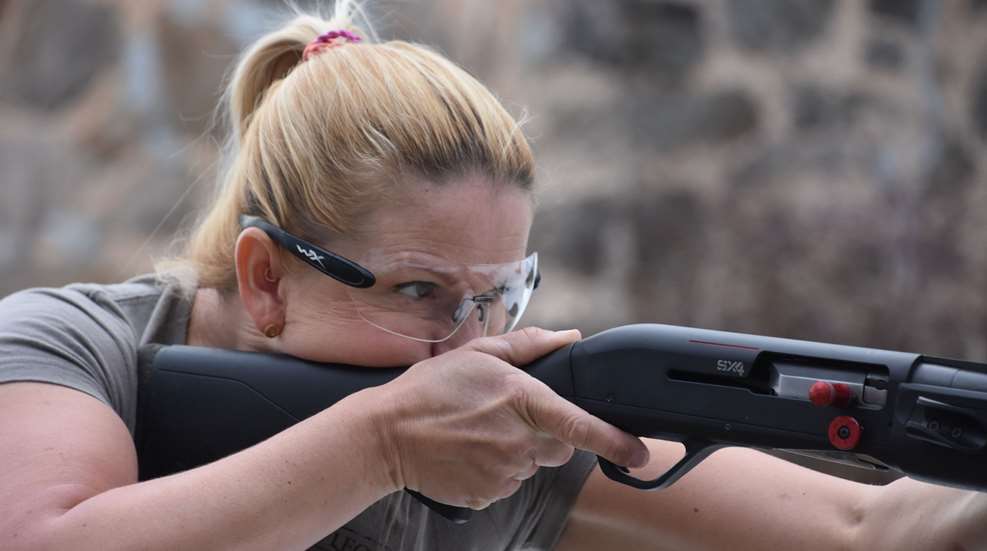
If you have never fired a shotgun, there are a few things you can practice without setting foot on the range that will help you feel more confident and comfortable. Using inert dummy rounds and working with the shotgun that you will shoot can make your first shotgun shooting experience much more enjoyable!
First Things First
The very first step, as with any work off the range with a gun, is to make sure that you have an empty gun and no live ammo anywhere near where you will work. Reviewing the rules of firearms safety is always a good way to start a session working with any gun or shooting skills.

Why Dry Fire a Shotgun?
The idea of dry firing a shotgun may sound unproductive to experienced shotgun shooters. However, for a new shotgun shooter, just familiarizing yourself with how the gun works and understanding how to mount the gun properly is a big deal! Even experienced shooters who compete at the highest levels of shotgun shooting still get “fit” for a shotgun, even though they know some of these basic things that the new gun owner doesn’t. Working with an empty shotgun is going to help the new shooter.
Getting to Know Your Shotgun
Understanding how your shotgun works is the first step. Every shotgun has a stock, consisting of a buttstock that goes into your shoulder, the pistol grip that you wrap your shooting hand around, and the fore-end that your support hand holds onto. You may have a cheek-pad or comb that can be adjusted.
Your shotgun may have even come with shims that can adjust how your gun “casts,” which impacts where your eye sits in relation to the rib of your shotgun (you want to be able to look straight down it). Your comb adjustment can change depending on whether you have a thinner or fuller face and your cheekbones. You are likely going to want to add/subtract a shim or maybe flip it (sometimes shims for cast are ambidextrous).

Set up in front of a mirror or camera, and look at how the gun fits you. Is the length of pull too long or too short? Does your eye look straight down the rib? If you see the top of the rib as if looking from above, you need to adjust the drop (this can be done with a shim, if your gun comes with them). If you are too far to one side, you might need to add or flip the shim that adjusts cast.
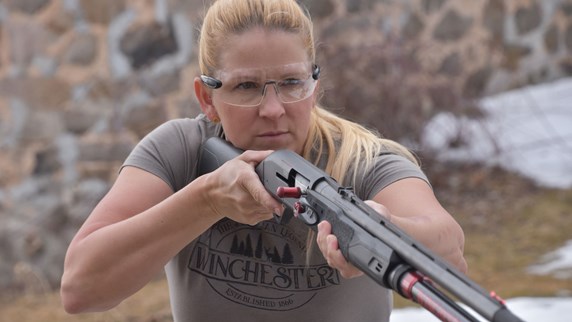
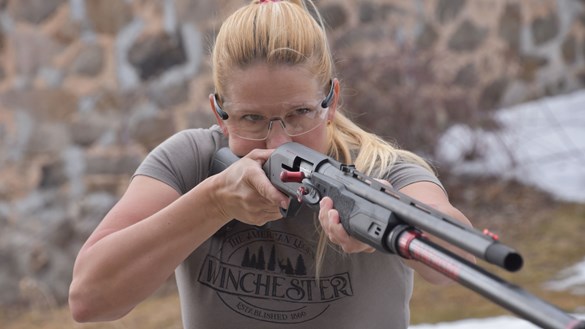
Here, the shooter's dominant eye is looking down the shotgun rib.

Here, the shotgun is too far off the shoulder.
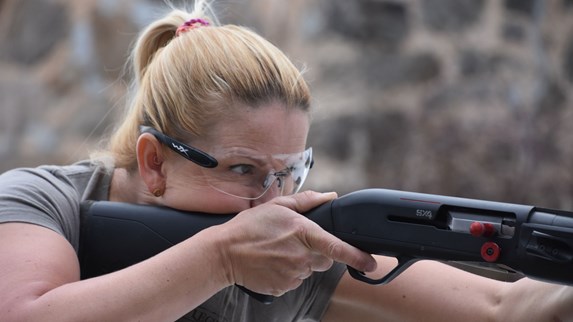
Here, the shooter demonstrates proper cheek weld.
For more on proper shotgun fit, check out these other articles and videos on this site that will help you understand what to look for.
How to Hold a Shotgun
Properly holding your shotgun will allow you to check if it fits correctly. After checking that your gun is set up as optimal as possible for you, you are going to want to practice mounting it. Your mount will help you get a good sight picture and allow you to manage recoil. It comes down to getting the gun in the right position in your shoulder and placing your face firmly on the stock.
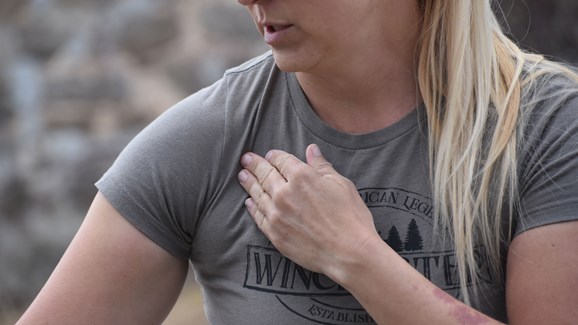
The shotgun’s recoil pad needs to fit into the “pocket” of your shoulder. If you bring your dominant arm up and forward, you will see that it creates an indent in your shoulder. You want the gun to sit there, because the closer the gun is to the centerline of your body, the less the recoil will push your body from one side, causing you to twist and take more time to come back on target. Also, having as much of your body mass behind the gun as possible will allow you to effectively control the kickback.
The shotgun should not be on your bicep or lower on your arm. If you have to get into some contorted position and your gun is on your bicep or shoulder, odds are that the length of pull is too long for you, and you need a shorter buttstock. By holding the stock out on your arm, or edge of shoulder, you are allowing the recoil to impact a small part of your body without mass behind it. It can be uncomfortable, give you a bruise and cause you to hate shotgun shooting.
Next, put your face firmly on the stock. Shotguns recoil like any firearm. The recoil can be short and snappy with lots of muzzle rise, or slower and more of a “push” straight back. The type of gun (gas-operated vs. inertia) can affect what you feel, and so can your ammo. Ammo needs to carry enough power to cycle the bolt and make the shotgun function. If you choose to shoot a pump shotgun, because it’s manually cycled, you can get away with shooting lighter/softer rounds that can feel friendlier to your body. But no matter how your gun recoils or what ammo you shoot, getting your face down on that stock as if it is glued in place will help you recover from recoil sooner. It will also ensure a consistent sight picture.
Basic Manipulations
Once you know how your gun fits and how to hold it, you can go over basic manipulations with dummy rounds. This will help you understand the way your particular shotgun works.
- Load and unload
- Chamber a round
- Clear the chamber
- Clear a round off the lifter (if you load improperly and cause a shell to “ghost load,” which is a way to load one extra round in a semi-automatic shotgun, i.e., one is loaded in the chamber, the magazine is loaded full and then one more is put on the carrier.)
- Unload a full shotgun magazine tube
- Lock your bolt back
- Engage and disengage the safety every time you pick up the gun or put it down
Wrapping It Up
When you spend a little time really getting a feel for your gun and learning more about how it should fit your body and how to use it, you are going to enjoy your time on the range with confidence.















































